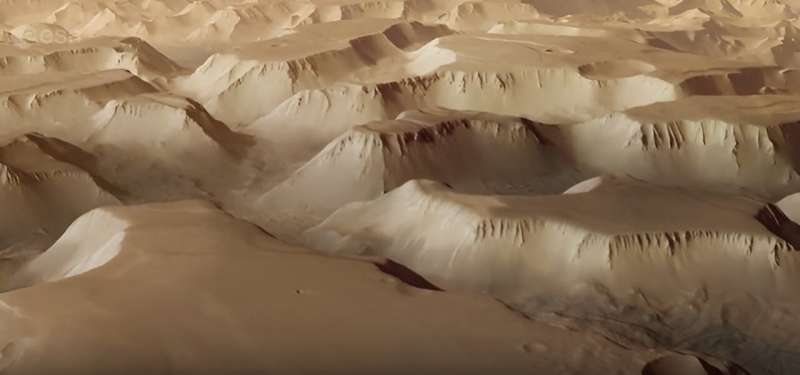Video: Fly across Mars' 'labyrinth of night' with Mars Express

Nestled between the colossal Martian "Grand Canyon" (Valles Marineris) and the tallest volcanoes in the solar system (the Tharsis region) lies Noctis Labyrinthus—a vast system of deep and steep valleys that stretches out for around 1,190 km (roughly the length of Italy here on Earth).
This video visualizes a flight over the eastern part of Noctis Labyrinthus as seen by Mars Express's High Resolution Stereo Camera (HRSC). It presents a perspective view down and across this fascinating landscape, showing distinctive "graben"—parts of the crust that have subsided in relation to their surroundings. The intense volcanism in the nearby Tharsis region is to blame for the formation of these features; this volcanism caused large areas of Martian crust to arch upwards and become stretched and tectonically stressed, leading to it thinning out, faulting and subsiding.
The highest plateaus seen here represent the original surface level before chunks of surface fell away. The intersecting canyons and valleys are up to 30 km wide and six km deep. In many places, gigantic landslides can be seen covering the valley slopes and floors, while other valley slopes show large dune fields created by sands blown both down and upslope by Martian winds.
ESA has highlighted Mars Express images of Noctis Labyrinthus before, in 2006 and 2015. Mars Express has orbited the Red Planet since 2003, imaging Mars's surface, mapping its minerals, studying its tenuous atmosphere, probing beneath its crust, and exploring how various phenomena interact in the Martian environment. For more from the mission and HRSC, see .
Provided by European Space Agency



















